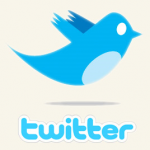 Software giant Microsoft has plans for its Xbox. Graduating from its existence as a gaming console, the Xbox is all set to be an over-the-top TV delivery device. This was announced by Steve Ballmer, chief executive officer, Microsoft, last week.
Software giant Microsoft has plans for its Xbox. Graduating from its existence as a gaming console, the Xbox is all set to be an over-the-top TV delivery device. This was announced by Steve Ballmer, chief executive officer, Microsoft, last week.
The venture has already garnered over 40 TV and entertainment providers and has amongst its partners in the US, Comcast, HBO, Bravo and Syfy. In the UK it partners with BBC, with Telefonica in Spain, Rogers in Canada, Televisa in Mexico, ZDF in Germany and MediaSet in Italy. The company said that over the holiday season, it would be rolling out entertainment services in more than 20 countries.
Microsoft had already entered into deals in the past with AT&T, Netflix and Hulu Plus in the US, Telus in Canada, BSkyB in the UK, Canal+ in France, Vodafone Portugal, VimpelCom in Russia and Foxtel in Australia and these services will continue as well as the 40 new deals.
Don Mattrick, president of the Interactive Entertainment Business at Microsoft said in a press release, “Today’s announcement is a major step toward realizing our vision to bring you all the entertainment you want, shared with the people you care about, made easy. Combining the world’s leading TV and entertainment providers with the power of Kinect for Xbox 360 and the intelligence of Bing voice search will make TV and entertainment more personal, social and effortless.”
At first it may seem that Microsoft has succeeded, where Apple has failed, in creating a rival for cable TV over the internet. However, a closer look at the announcement will make it clear that Xbox is making the cable TV its ally in its war with Sony’s PlayStation. Microsoft will earn some subscription revenue from the Xbox OTT but majorly it simply makes the device and Live network more appealing than Sony alternatives. Where Apple and others erred is that they tried to partner with content creators vis a vis existing content operators.
Microsoft’s current hot technology, Kinect, is the one on which the company is partnering with the entertainment providers, particularly, Comcast and Verizon FiOS TV. Kinect can detect hand movements and turn them into remote control commands and can also work on Bing voice commands.
This implies that by using gestures and voice commands, you can get a channel to play, pause and move on. Does this mean, a world without remote control? What is the solution if there is more than one person wanting to watch different shows? Right now, there seems to be no answer within this venture.
Entertainment providers who have partnered with Microsoft in this venture are upbeat and have positive comments.
Comcast has already referred the service in a letter to the US regulator, FCC, revealing the fact that it was partnering with the software giant’s Xbox. 
Vice president of consumer and mass business product management for Verizon, Eric Bruno, said, “FiOS TV on the Xbox 360 is an excellent example of how we are working with market leaders to erase old technology borders to expand the FiOS TV experience and taking advantage of unique new features including voice and gesture control of live TV entertainment via Kinect.”
Vice president of video services at AT&T Mobility and Consumer Markets said in a press release, “A year ago, AT&T U-verse became the first TV provider in the US to launch live TV on Xbox 360. Now, we look forward to working with Microsoft to deliver even more innovative features that will allow U-verse TV customers to use voice and gesture controls to manage their TV experience.
Expected to come before the holiday season, the Xbox Live TV service could turn out to be more pricier than Roku or Apple TV as it has some great game titles and a new way to browse through your content, in addition to watching videos, view pictures or listen to music. With the unified dashboard you can browse your shows, play the games, work your social networks and more. You will connect to the Comcast Xfinity service to get all that service has to offer.


